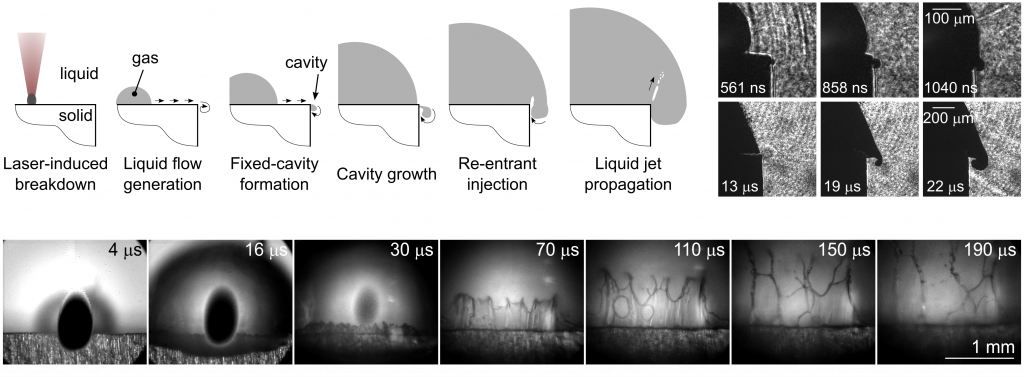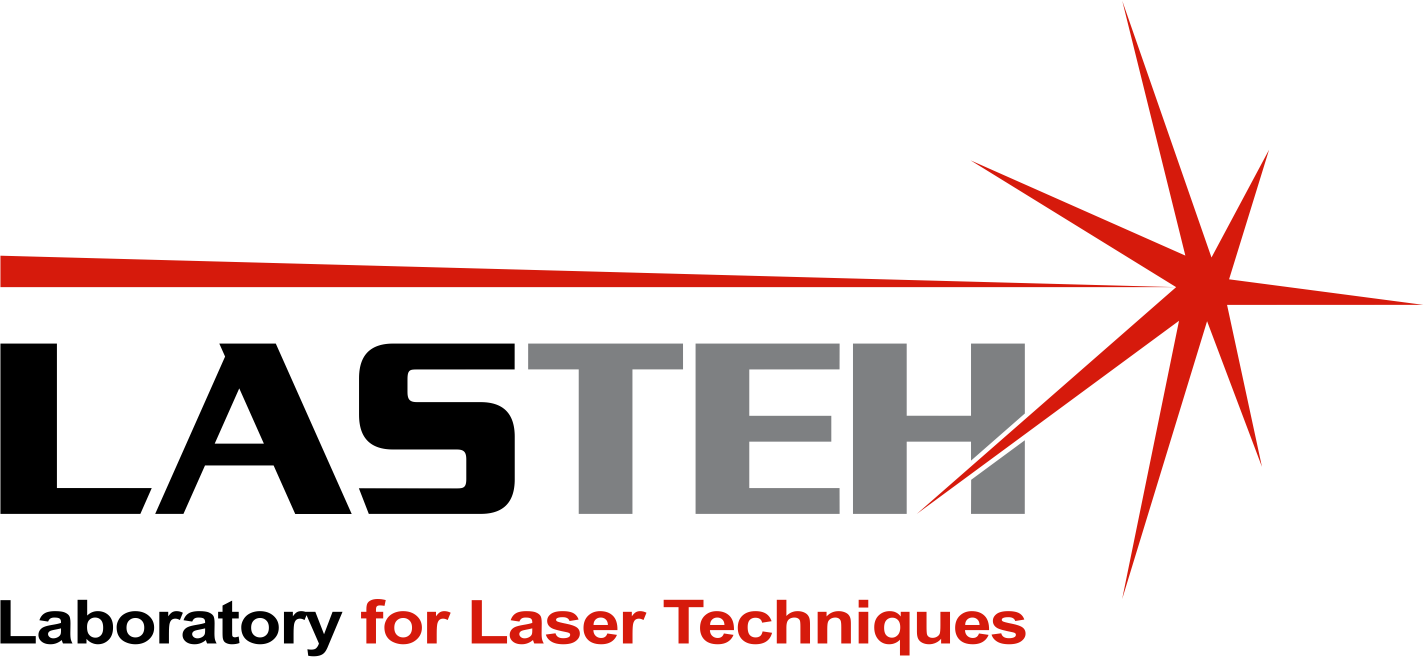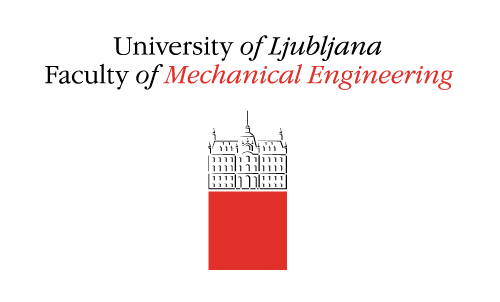An inside view of fluid dynamics within a laser-induced cavitation bubble
19. January, 2021 12:56 | Peter Gregorcic | News
The wall of a cavitation bubble represents a spherical liquid-gas interface. Thus, different optical densities do not allow to view inside the cavitation bubble by conventional techniques. Matej Senegačnik and Assoc. Prof. Dr. Peter Gregorčič from LASTEH laboratory in bilateral cooperation with Kyoto University developed a new approach by diffuse illumination that opens the possibility to capture bubble dynamics inside the cavitation bubble with high temporal (250 ns) and spatial resolution (~ 1 um). The results, that are important for further improvement of nanoparticles production by laser ablation in liquids, were published in Ultrasonics Sonochemistry.

Within a bilateral cooperation between Faculty of Mechanical Engineering (University of Ljubljana) and Kyoto University (Japan) we have developed a new approach for examination of nanomaterial production during laser ablation in liquids. By using a diffuse illumination and a high-speed camera, we were able to see the fluid dynamics inside the cavitation bubble, when it expands over a sharp “cliff-like” 90° geometry. The cavitation bubbles were induced by nanosecond laser pulses irradiating thin metal plates submerged in different liquids, including water, ethanol, and polyethylene glycol.
We have shown that fixed-type secondary cavitation may appear behind the edge due to low-pressure that is induced by the bubble-driven flow of the liquid. Our results clearly reveal a re-entrant liquid jet that penetrates into the bubble with velocity up to 40 m/s, when the bubble overflows the edge of the sample. Formation of the jet evidently depends on the relation between the breakdown-edge offset, bubble energy, and the properties of the liquid. The presented results are the first experimental observation of liquid dynamics inside the cavitation bubble that is induced by re-entrant flow. Thus, they will importantly contribute to further understanding of mechanisms of nanoparticle production by ablation in liquids and will serve to a more general understanding of bubble dynamics within confined geometries.
The developed experimental approach will have an interdisciplinary impact, as the cavitation bubbles play an important role in a diverse range of applications, such as nanoparticle production, underwater breakdown spectroscopy, enhanced heat transfer with nucleate boiling, refrigeration, microfluidics, and laser biomedical procedures.
The published paper is freely available at: http://www.doi.org/10.1016/j.ultsonch.2021.105460, while the dataset of experimental results is accessible at: http://doi.org/10.17632/w8mpz3v3w2.1.

